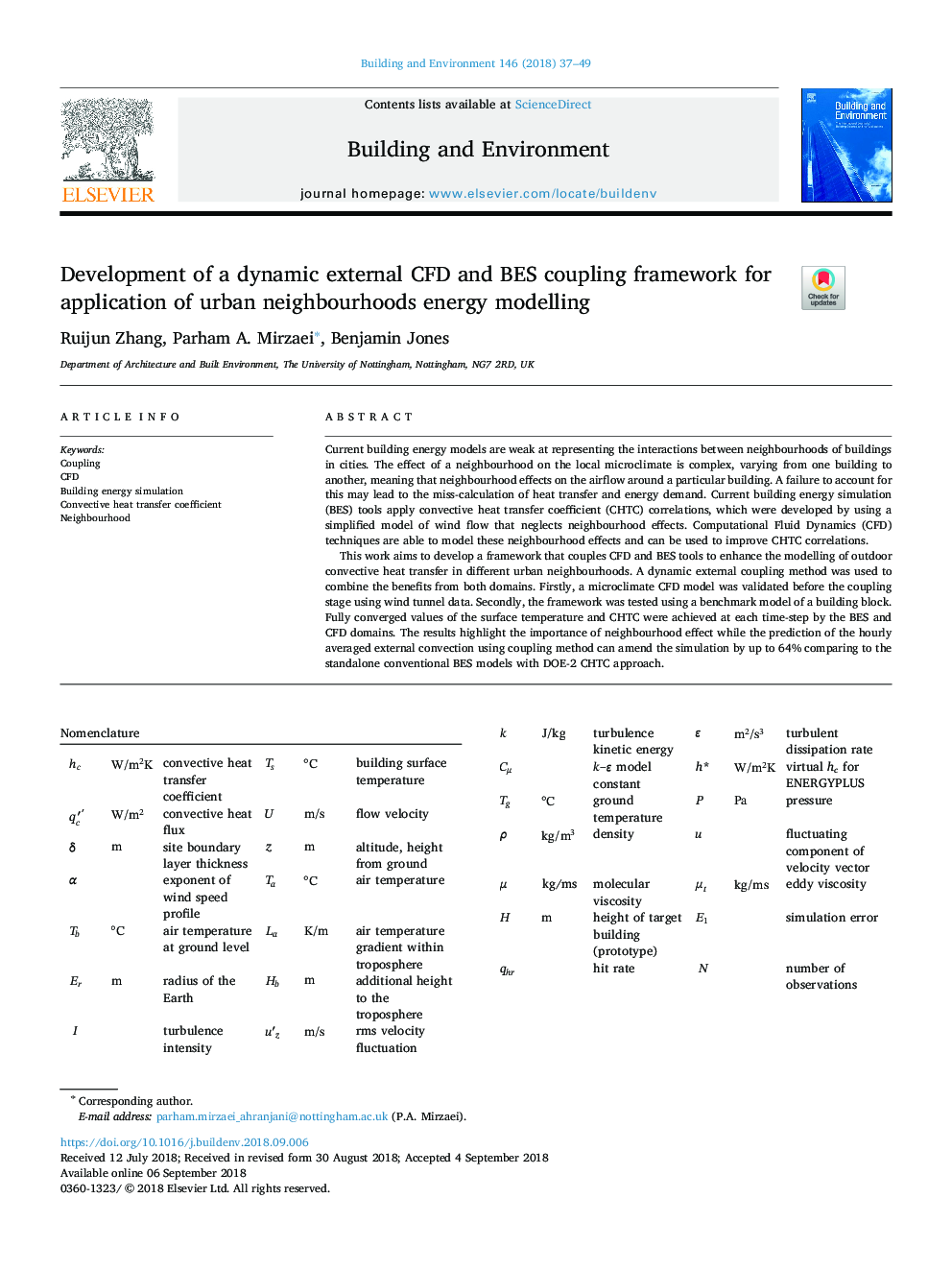| Article ID | Journal | Published Year | Pages | File Type |
|---|---|---|---|---|
| 11024289 | Building and Environment | 2018 | 13 Pages |
Abstract
This work aims to develop a framework that couples CFD and BES tools to enhance the modelling of outdoor convective heat transfer in different urban neighbourhoods. A dynamic external coupling method was used to combine the benefits from both domains. Firstly, a microclimate CFD model was validated before the coupling stage using wind tunnel data. Secondly, the framework was tested using a benchmark model of a building block. Fully converged values of the surface temperature and CHTC were achieved at each time-step by the BES and CFD domains. The results highlight the importance of neighbourhood effect while the prediction of the hourly averaged external convection using coupling method can amend the simulation by up to 64% comparing to the standalone conventional BES models with DOE-2 CHTC approach.
Related Topics
Physical Sciences and Engineering
Energy
Renewable Energy, Sustainability and the Environment
Authors
Ruijun Zhang, Parham A. Mirzaei, Benjamin Jones,
